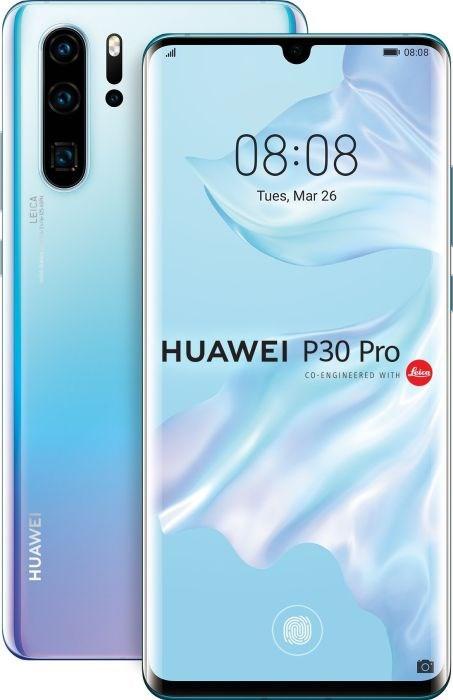

Huawei P30 Pro: A phone that still has to prove itself
The specs sound a little old-fashioned and familiar. However, the Huawei P30 Pro is convincing. An initial expedition in the Parisian night shows that the P30 Pro is by no means bad, but the proof of its long-term quality has yet to be provided.
I don't really like the specs of the new Huawei P30 Pro. Nothing about it sounds particularly exciting. Kirin 980 system-on-a-chip, 8 GB RAM, 128 or 256 GB internal memory, expandable with a nano SD card, 6.47-inch diagonal curved AMOLED screen, 4200 mAh battery. Doesn't really knock my socks off now.
Nevertheless: I'm kind of interested in this thing. Because Huawei has tweaked a few things, and when CEO Richard Yu talks about his new flagship on stage in Paris, the usual enthusiasm of the charming man with the bad English is palpable. Especially when he talks about the P30 Pro's new camera system.

More cameras, more better?
The camera is not just good, it is simply better, they say. What exactly this "better" is supposed to be is obvious from the test shots in the presentation. It's just a shame that a recent scandal has ruined this effect - which is nevertheless acknowledged with a murmur and some applause from the journalists. Last week, Huawei was caught for at least the third time claiming that images taken with a DSLR camera were being passed off as images from the P30 Pro's camera. Well, that was stupid.
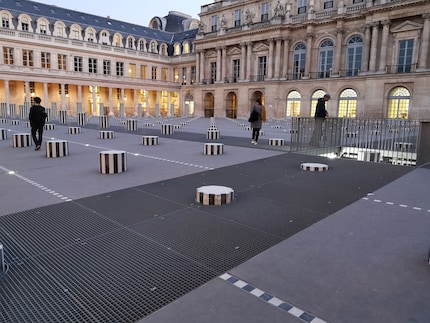
Shot just before sunset at the Palais Royale in Paris
That's why video producer Stephanie Tresch and I realised that we would be doing our first tests on Wednesday night. Especially low light shots. We want to see whether the four cameras really can do it as well as the images on the screen suggest.
The answer is the same as pretty much every answer to a question about the P30 Pro: We'll see. Because the potential is there, no question. Notre Dame Cathedral has rarely looked better in the dark. Every gargoyle, every ornament, every stone is illuminated in night mode. But it all looks so eerily artificial.
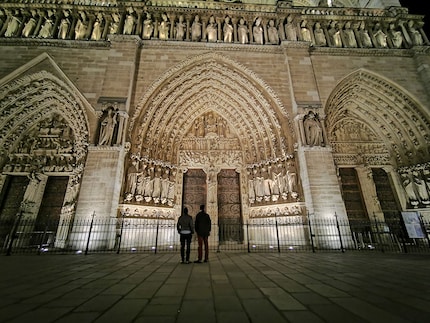
Notre Dame in night mode
But in normal photo mode, where you let the camera's artificial intelligence (AI) decide on its own what it sees, the camera shines.
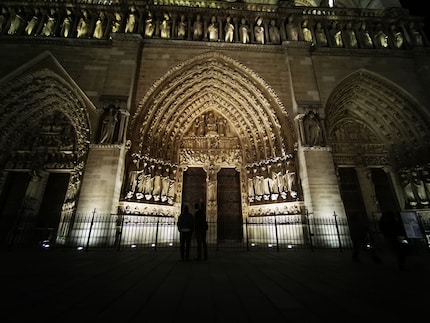
Notre Dame photographed so that the AI decides
Clearly, the software's performance is impressive and it does little to nothing wrong. It accentuates colours where it needs to, brings out the tones it needs to and brightens everything up so that it looks like a really successful photo in the dark. Of course, because the four cameras can keep up to 409,600 ISO more or less stable and work with an F-stop of up to f/0.95. The software is also really good at creating a composite from night mode shots.
The problem: I don't like the pictures. The night mode images have nothing in common with night. They look like strangely lit pictures that were taken during the day. I like the aperture mode much better, where you simply open the lens up to f/0.95 and then take the picture.
Luckily, this is not the only aspect in which Huawei is looking for the best. Because there's also the matter of the zoom.
50x only with tripod please
The Huawei P30 Pro has four cameras. However, lens number four is not another lens, such as a macro or monochrome lens, but a Time of Flight Camera (TOF). Put simply, this is a kind of distance sensor that helps to estimate and process distances between the smartphone, subject and background more quickly and accurately. This should provide you with a better bokeh effect, i.e. a better depth of field. However, the TOF camera seems a little overzealous. There are images, when I leave the decision about settings to the AI, that just won't come out without bokeh. A comparison with a shot from last year.
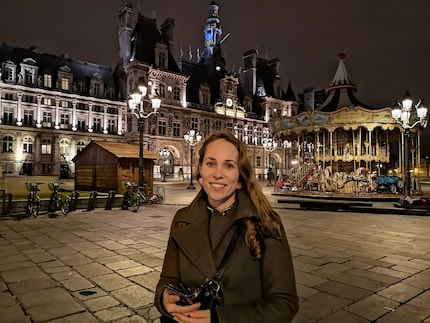
Taken with the Huawei P20 Pro on 27 March 2018 at 11:02 pm
The P20 Pro has recognised Stephanie cleanly, although it does fray her hair a little and the Hôtel de Ville looks as if it has been painted with watercolours. The image is good for social media or without much zoom.
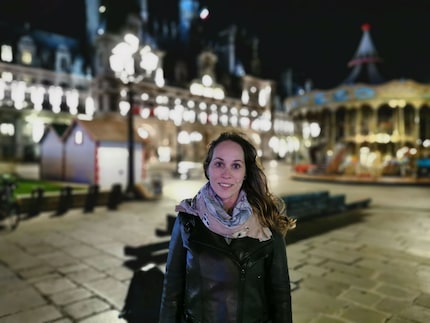
Taken with the Huawei P30 Pro on 26 March 2019 at 22:48 in Aperture Mode
The Aperture mode logically blurs the background, because a rule from photography goes something like this: the more Aperture, the more depth of field. Nevertheless, if the AI decides that the aperture mode has to go there, then it is making the wrong decision. So I force it into night mode.
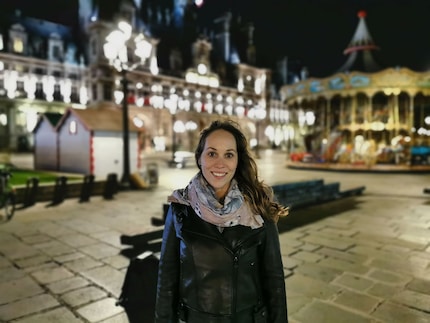
Taken with the Huawei P30 Pro on 26 March 2019 at 10:48 pm in night mode
When it comes to zoom, Huawei shows its inventive spirit and goes big. Optically, the P30 Pro has a 5x zoom. Hybrid zoom is still 10x and with digital support, the phone manages a 50x zoom. However, the latter is almost completely unusable without a tripod - you have to have a very steady hand to somehow get a good shot.
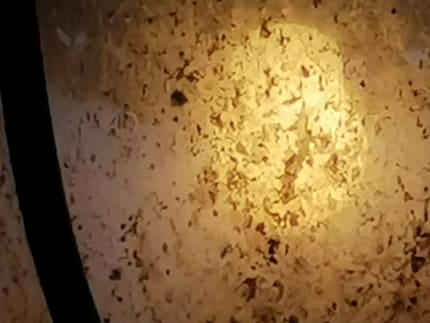
A lamp at a height of three metres from a distance of about five metres in the Palais Royal
But that's the end of our expedition into the Parisian night. It's getting cold, windy and we have work to do: Stephanie has to edit the video you can see above and I have to write this text here.
Black is boring
Back in the hotel room, we get to work. I draw my first conclusions. The phone has suffered since I received it. Not only did the black P30 Pro have to go through a setup process, but I was more or less constantly busy tinkering with the settings, planning routes, finding restaurants or taking pictures and videos. Of the 91% battery with which I unpacked the smartphone, 42% is still left. And that's even though I really pushed the P30 Pro to the limit. Other smartphones, with the Samsung S10+ leading all current flagships, would have long since fallen to their knees.
Thus, a thesis: The Huawei P30 Pro is not a phone that impresses at first glance. It's not a phone that redefines the world or immediately knocks everyone's socks off. It is a phone that proves itself in use. A mobile that earns its place as a tool for everyday use, that doesn't get messy and lasts a long time.
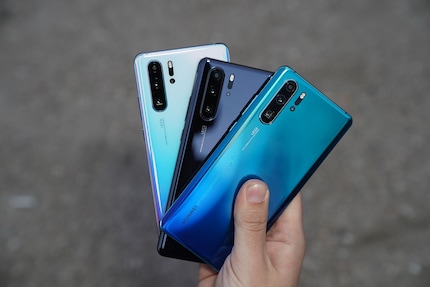
Further, I must note that we have successfully managed to live in a world where a black mobile may look elegant and all, but comes across as boring as hell. Huawei has buried its black-to-purple colour gradient with the name Twilight and given it a successor. "Aurora" goes from green to blue and "Breathing Crystal" from white to violet and blue. Wow. Really. There is still an orange-red colour, but it's a bit too bold.
Your questions with answers
In the first article about Huawei's show in Paris, I asked you about your questions. Let me answer them as best I can after about six hours of testing
.
3 questions: Are similar low-light performance images as shown in the press conference really possible? Only mono sound ? So if a video is being watched, does the sound not come from the screen, but only from the mono speaker underneath the phone? And finally: Do you dare to say again that this will be the phone of the year?
- Yes, see above. We currently believe that the pictures could have been taken with the P30, but they are the best of the best shots. That's why they have been shown
- Yes, it seems that the sound in YouTube videos only comes from the speaker at the bottom next to the charging port
- Currently not. That's not to say that the phone is bad, but simply that it's too early. It will certainly play at the top, but since the P30 will probably only come into its own in the long term, I'll put it this way: Ask me again in a month or two
Is it really worth switching from a P20 Pro?
Also difficult to say after using the phone for six hours. It's certainly a solid upgrade, depending on where you prioritise your purchase, but I don't want to commit to a "yes" or a "no". Ask me again in a month or two.
As an iPhone user, can I make the switch? What advantages and disadvantages do I have compared to the iPhone?
- Yes, I have no doubts and only a few problems. I switch from Android to iPhone at least once a year and then back again. That's easy
- Advantages: With Android, you can choose from a wide range of features. Some phones have great camera systems, others have a long-lasting battery, some have good speakers, others have a great screen. Some have a stylus, others are foldable. It's not impossible that Apple can do all this too, Android simply makes it more diversified. And in most cases, the price of an Android is more attractive than that of an iPhone.
- Disadvantages: Almost every Android manufacturer insists on customisations to the software. Huawei's EMUI is atrocious, Samsung's OneUI is passable to good, Nokia relies on Android One, which is distributed by the central Google factory in a similar way to iOS, and the Pixel has a slightly modified version of this. But you can largely configure the user interface yourself. I recommend Nova Launcher for this.
Does the P30 pro or the P30 have a wide-angle camera? Like the S10, for example?
The four cameras of the P30 Pro are:
- 40MP, 1/1.7-inch quad sensor; F1.6 aperture, OIS, 27mm-equivalent
- Tele: 8MP sensor, folded optics with F3.4 aperture, OIS, 125mm-equivalent
- Super-wide: 20MP, F2.2 aperture, 16mm-equivalent
- Time of Flight Camera for measuring and covering distances
The P30 has the following camera system installed:
- 40MP, 1/1.7-inch quad sensor; F1.6 aperture, OIS, 27mm-equivalent
- Tele: 8MP sensor, folded optics with F3.4 aperture, OIS, 125mm-equivalent
- Super-wide: 20MP, F2.2 aperture, 16mm-equivalent
Journalist. Author. Hacker. A storyteller searching for boundaries, secrets and taboos – putting the world to paper. Not because I can but because I can’t not.


